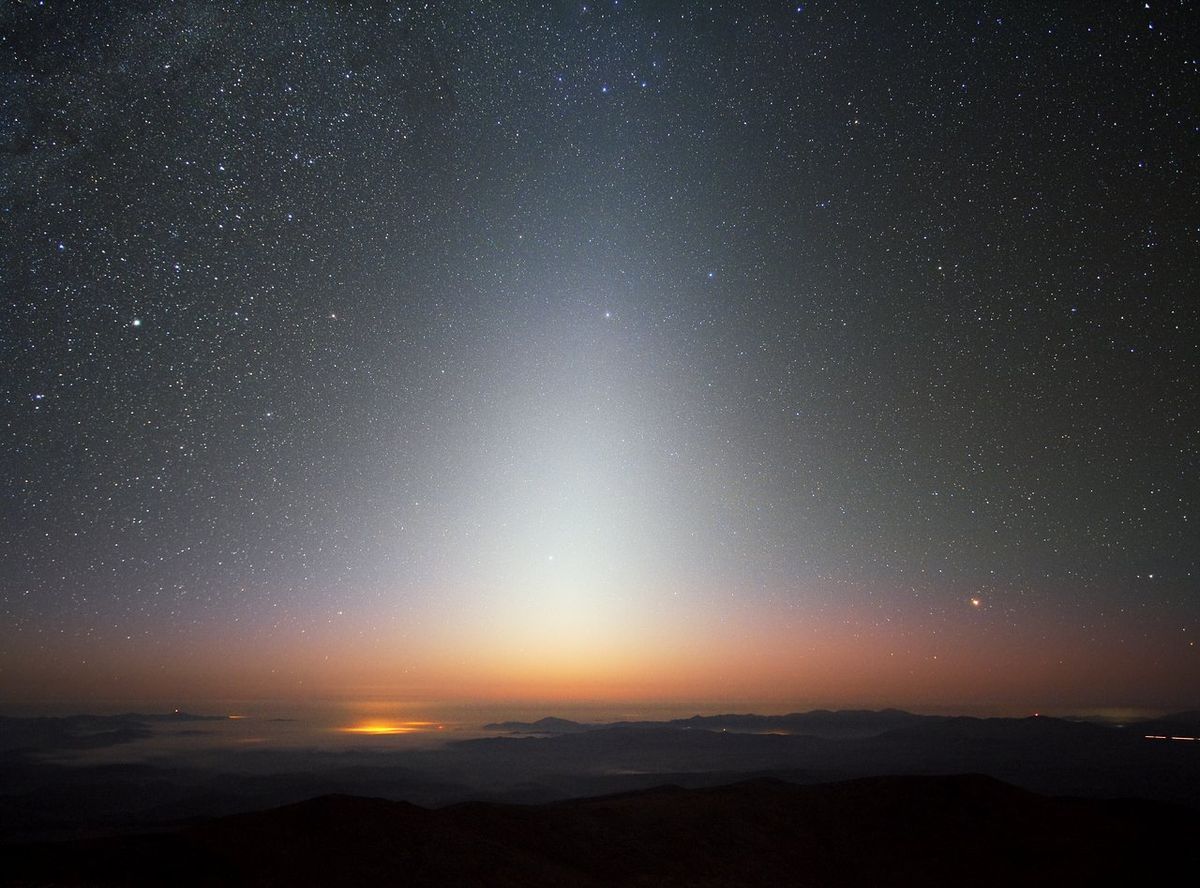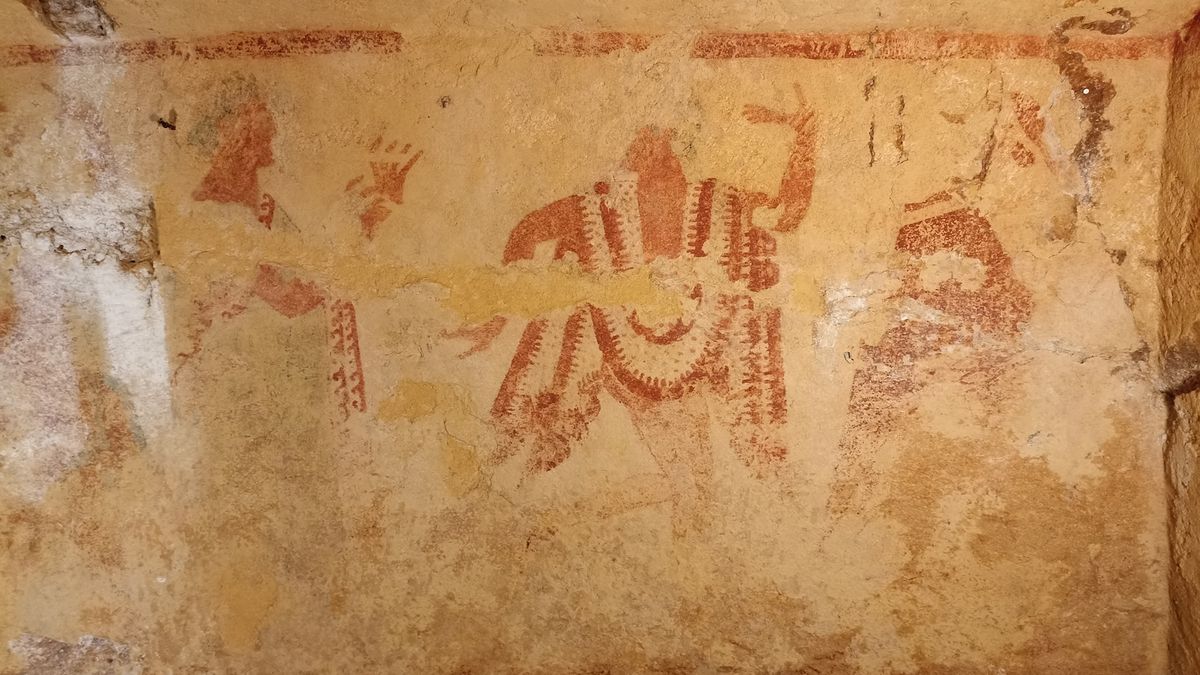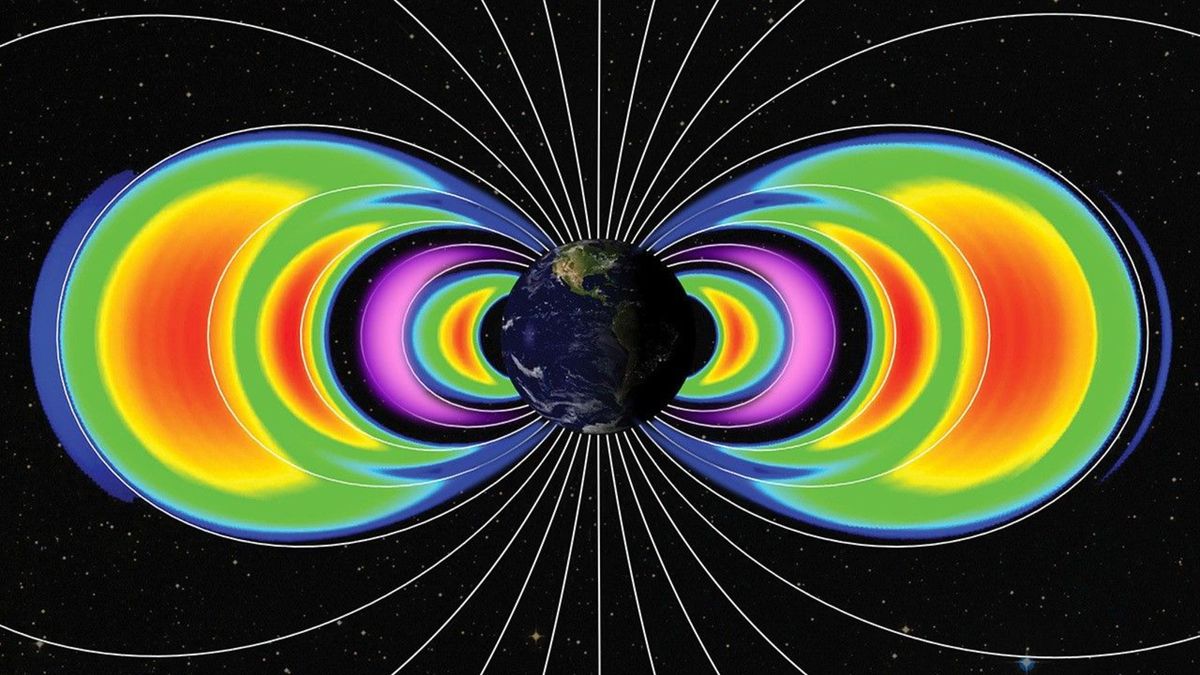A strange triangle of light will glow in the sky during late twilight in the southwest this month —, but it will only be visible in inky black, moonless skies, and only during the second half of February.
Zodiacal light, often called “false dusk,” is a phenomenon caused by sunlight scattering off interplanetary dust particles within the solar system. These dust particles, comprising remnants from the formation of planets and debris from comets, orbit the sun in the same plane as the planets.
The light’s triangular shape appears in the belt of constellations known as the zodiac, according to the European Southern Observatory. These constellations are found along the ecliptic, the eastward apparent path that the sun traces across Earth’s sky, according to Space.com.
Although it’s long been thought that zodiacal light is caused by dust particles brought into the inner solar system by asteroids and comets, scientists using data from NASA’s Jupiter-orbiting Juno spacecraft claimed in 2020 that some of that dust originates from Mars. The researchers suggested that Mars sheds dust into space, which is then influenced by Jupiter’s gravity and dispersed throughout the inner solar system.
Related: The 10 best stargazing events of 2025
Seeing the faint column of light extending up from the horizon requires careful planning. With a bright moon gone from the twilight sky by Feb. 15, stargazers will have the best chance to spot the phenomenon if they find a remote dark-sky location far from urban areas. It’s vital to have a dark sky towards the west and southwest, making coasts and islands a good choice.
Timing is also key, with the light prominent only for about an hour after sunset — when the sky is sufficiently dark but before its glow fades. Although the light’s triangular glow is unmistakable, look slightly off to one side to better detect its faint brightness. This technique is known in astronomy circles as “averted vision.”
Zodiacal light is visible as a “false dusk” in February because, just before the spring equinox (which this year occurs on March 20), the ecliptic tilts steeply relative to the horizon in the Northern Hemisphere, lifting the light above atmospheric haze and making it easier to see.















